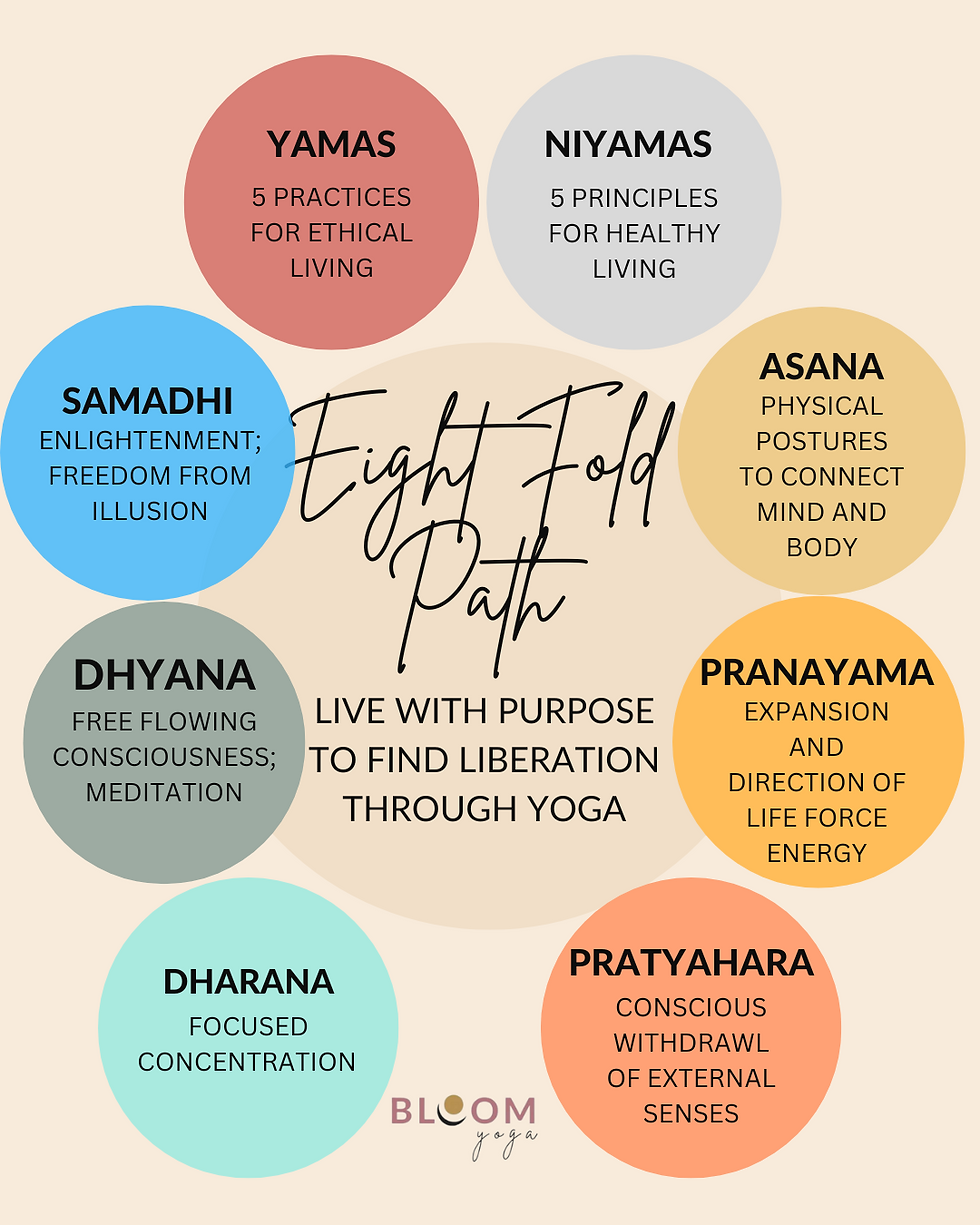So many modern yoga practitioners are drawn to yoga for it's many physical benefits; but beyond the physical lies yoga's rich and varied philosophical wisdom! Centuries old, yoga philosophy offers up insight and understanding to live better in our bodies and by doing so live in alignment with the world around us! It's as applicable in today's modern world as it was when it was first classified many thousands of years ago!
One of the foremost texts on yoga philosophy and theory is The Yoga Sutras, a compilation of 196 sutras (or aphorisms), where each sutra presents guidelines for yoga practitioners to live with a greater sense of purpose and meaning. Compiled by a (supposed) Sage or Rishi called Patanjali during the Classical Yoga period (200 BCE - 200 CE), the Yoga Sutras brought together knowledge and wisdom from yoga into a single source.
The Yoga Sutras are categorised into 4 chapters or padas:
Samadhi Padas contains 51 sutras discusses the meaning of yoga
Sadhana Padas contains 55 sutras outlines the practice of yoga, including the 8 limbs of yoga
Vibhuti Padas contains 56 sutras about the benefits of practicing yoga
Kaivalya Padas containing 34 sutras on the goal of yoga with a focus on liberation and freedom from suffering
The limb of yoga that most of us are familiar with is ASANA, when we look at the Eightfold path as laid out in the second chapter of the Yoga Sutras we can see that asana forms just a small part of the practice of yoga. Patanjali only makes reference to asana a few times throughout the whole 196 sutras, meaning that there are other limbs which are of greater emphasis and importance.
Although, these eight limbs were intended to be practiced sequentially; one was to be mastered before moving on to the next, and mastering each limb required patience and practice. Given that so many of us come to yoga through asana, meditation or pranayama it's reassuring to know that we can still practice yoga and gain insight from these other limbs even if we're not sitting with our legs crossed on a yoga mat!
Much like the 8 limbs of yoga, our Yoga Teacher Training program places as much emphasis on the other facets of yoga's history and philosophy besides asana, so that practitioners have a fully embodied awareness and practice of yoga in their everyday lives - one that takes time to digest, integrate and assimilate.
Not only does this make the practice of yoga more accessible, but recognises the longevity of yoga as a practice for all aspects within each of us: physical, mental and spiritual.


Comments